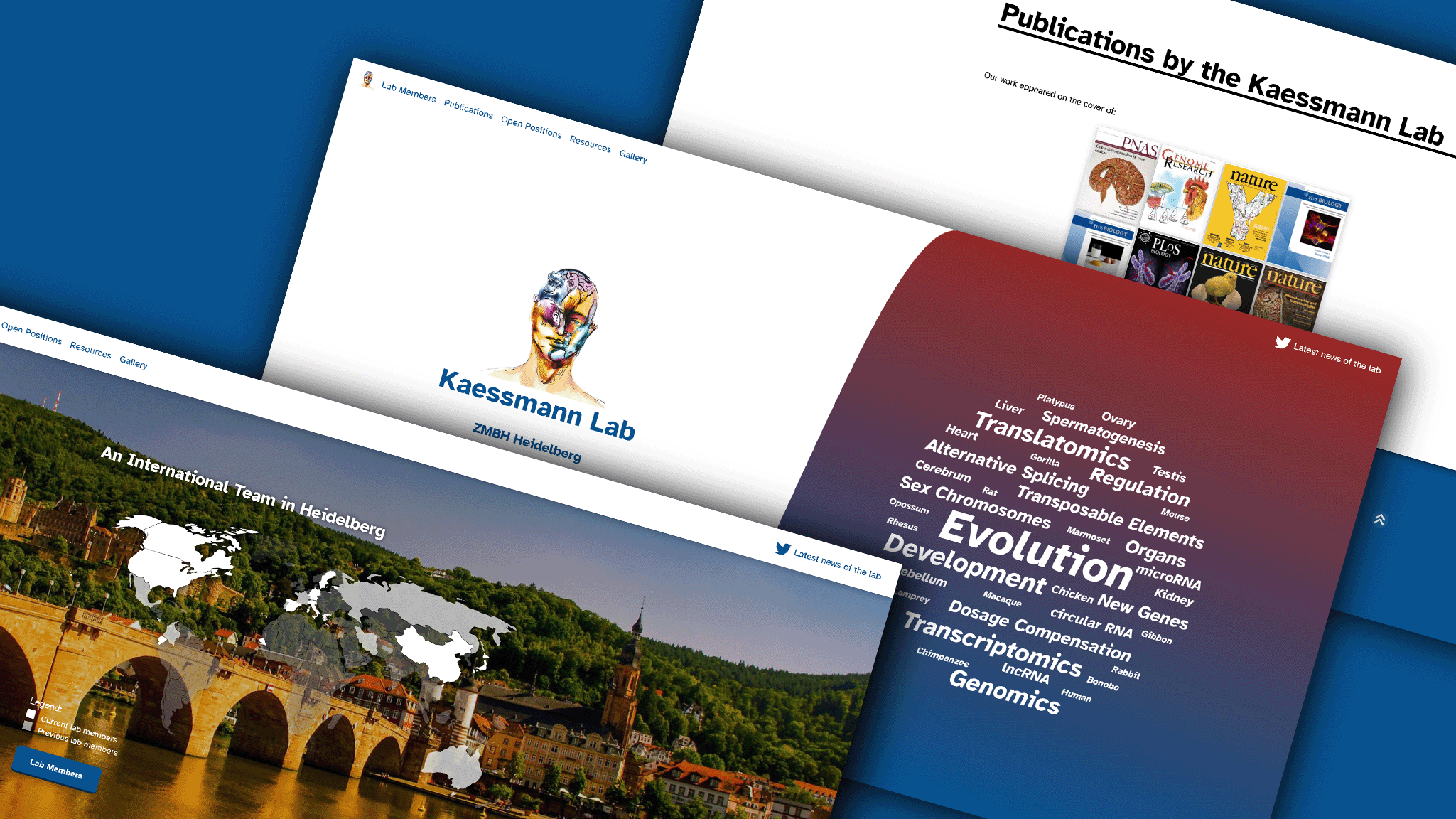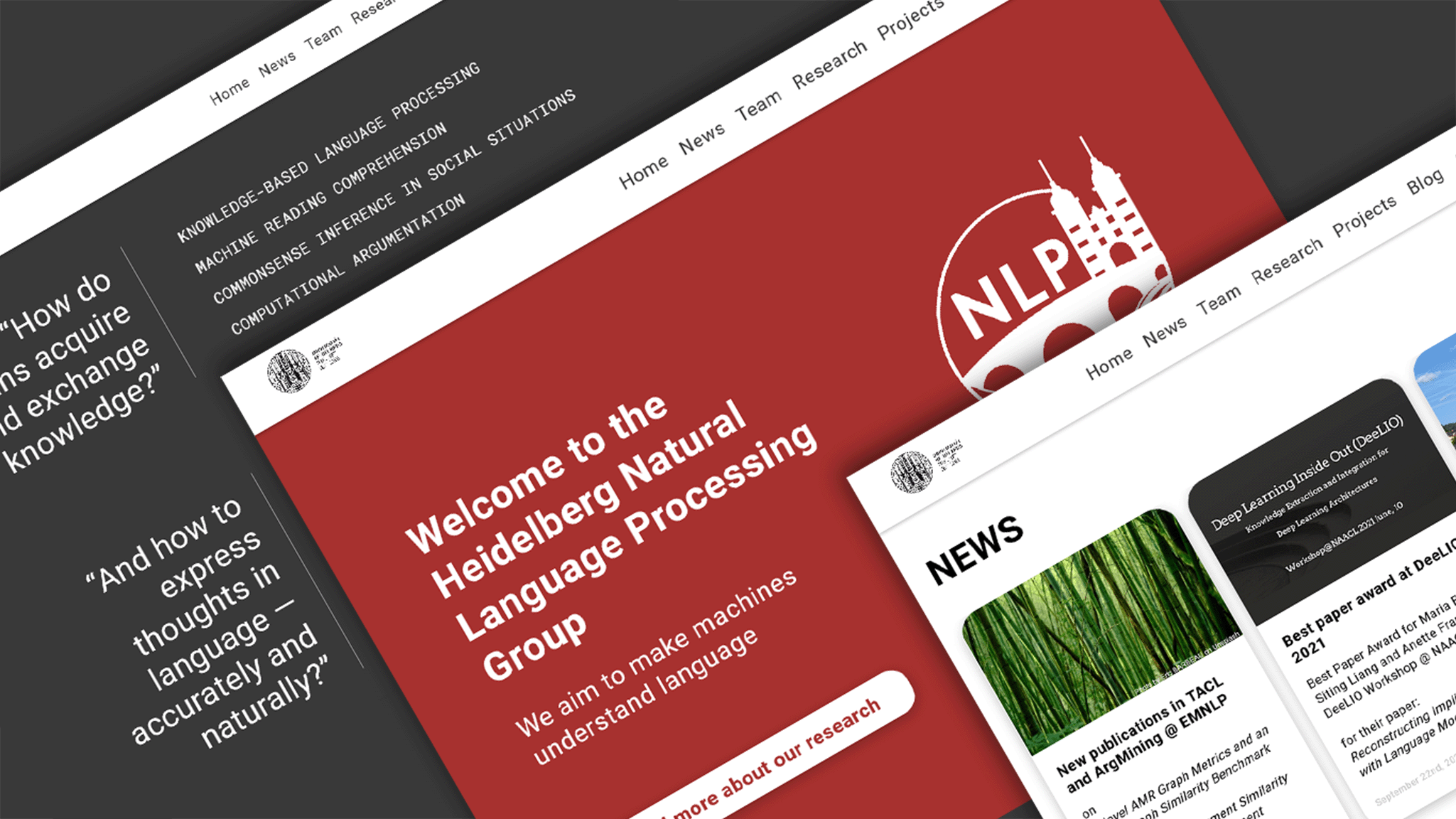Highlights
babyplots
Easy, fast, interactive 3D plots for data exploration and presentation.
babyplots is an easy to use plotting library, to create interactive 3-dimensional visualizations. It is available as a javascript/typescript library, an R package, a Python package, an interactive node-based creator and as an add-in for Microsoft PowerPoint.
Web and App development
A selection:
Kaessmann lab home page (contract work)
Link
NLP group homepage (contract work)
Link
App for exploring the data of the paper
Cellular development and evolution of the mammalian cerebellum. Sepp, Leiss, et al. Nature
2023
Link
Teaching
Courses at the HBIGS graduate school
Data Presentation with R Shiny
Introduction to Deep Learning
Course for the Molecular Biosciences master program
Single-cell data analysis with R
Publications
Visit my Google Scholar page for a complete list. Selection:
The evolution of gene regulatory programs controlling gonadal development in primates
Trost, N., Fallahshahroudi, A.,Sarropoulos, I., Schneider, C., Schmidt, J., Mbengue, N., Wolff, E., Drummer, C., Frömel, R., Lisgo, S., Murat, F., Sepp, M., Cardoso-Moreira, M., Behr, R., Kaessmann, H., bioRxiv (2025)
Sex-determining pathways produce dimorphic gonads (ovaries and testes), yet the gene regulatory programs governing gonadogenesis and their evolution in primates remain little explored. Here we report evolutionary analyses of transcriptome and chromatin accessibility data of male and female human, marmoset (New World monkey), and mouse gonadal cells spanning key prenatal stages. We find that the two primates and mouse share similar X chromosome expression dynamics, including X chromosome reactivation (XCR), and that in Klinefelter syndrome (XXY) testes, germ cells undergo female-like XCR and escape of X inactivation. New male-specific regulatory regions have emerged progressively during mammalian evolution, especially on the X following sex chromosome origination. Further analyses revealed that male-specific regulatory regions evolved faster than female-specific ones in both supporting and pre-meiotic germ cells. However, female meiotic germ cells show even higher rates of molecular evolution and exhibit a permissive chromatin state that facilitates the birth of new genes, thus resembling their adult spermatogenic counterparts. Finally, we traced both conserved and species-specific gene expression trajectories across the three mammals, uncovering candidate genes for disorders of sex development that are typically central to cell-type-specific regulatory networks. Together, our study unveils both ancestral mammalian and recently evolved gene regulatory programs that control human- and primate-specific aspects of gonadal development in both sexes.
Evolution of Chromatin and Transcriptome Dynamics During Primate Gonadogenesis
Trost, N. - PhD thesis at Heidelberg University (2025)
Sexual reproduction is the only way for mammals to create offspring – and it is the primary
way for many other animals. It creates diversity in a population by combining gametes and
thereby genetic information of both parents. Gonadogenesis creates ovaries or testes,
sexually dimorphic organs that produce the female or male gametes and involves the processes
of sex determination and differentiation. Given their essential role in the survival of the
species, the large observed diversity of these processes is surprising. Spermatogenesis in
the adult testis was shown to evolve rapidly and its unique transcriptional landscape
promotes the emergence of new genes. This was formulated in the “out of the testis”
hypothesis. However, the evolutionary dynamics of oogenesis remain less understood.
Furthermore, many insights on gonadogenesis have come from mouse models. Considering the
fast evolution of gonads, the applicability of these findings to the human process is
imperfect – especially in regard to disorders/differences of sex development (DSD). In my
dissertation work, I set out to improve our understanding of primate gonadogenesis and its
evolutionary dynamics. For this, I analysed at the single cell level the chromatin
accessibility and transcriptome of human and marmoset female and male prenatal
gonadogenesis, including a sample from a developing testis of a foetus with Klinefelter
syndrome (XXY).
My thesis work advances the understanding of primate gonadogenesis and its disorders, by
characterizing regulatory and expression changes during prenatal development. My
evolutionary analyses provide insights into the evolution of gonadal cell types and present
oogenesis as a birthplace of new genes.
The molecular evolution of mammalian spermatogenesis
Trost, N., Mbengue, N., and Kaessmann, H. Cells & Development 175 (2023)

The testis is a key male reproductive organ that produces gametes through the process of spermatogenesis. Testis morphologies, sperm phenotypes, and the process of spermatogenesis evolve rapidly in mammals, presumably due to the evolutionary pressure on males to give rise to their own offspring. Here, we review studies illuminating the molecular evolution of the testis, in particular large-scale transcriptomic studies, which were based on bulk tissue samples and, more recently, individual cells. Together with various genomic and epigenomic data, these studies have unveiled the cellular source, molecular mechanisms, and evolutionary forces that underlie the rapid phenotypic evolution of the testis. They also revealed shared (ancestral) and species-specific spermatogenic gene expression programs. The insights and available data that have accumulated also provide a valuable resource for the investigation and treatment of male fertility disorders – a dramatically increasing problem in modern industrial societies.
Link to the paperWEADE: A workflow for enrichment analysis and data exploration
Trost, N., Rempel, E., Ermakova, O., Tamirisa, S., Pârcălăbescu, L., Boutros, M., Lohmann, J. U., Lohmann, I. Plos one 13.9 (2018)

Data analysis based on enrichment of Gene Ontology terms has become an important step in exploring large gene or protein expression datasets and several stand-alone or web tools exist for that purpose. However, a comprehensive and consistent analysis downstream of the enrichment calculation is missing so far. With WEADE we present a free web application that offers an integrated workflow for the exploration of genomic data combining enrichment analysis with a versatile set of tools to directly compare and intersect experiments or candidate gene lists of any size or origin including cross-species data. Lastly, WEADE supports the graphical representation of output data in the form of functional interaction networks based on prior knowledge, allowing users to go from plain expression data to functionally relevant candidate sub-lists in an interactive and consistent manner.
Link to the paperWeb development
In addition to this website, I have created several websites, applications, and software tools. Find a selection here:
babyplots
Easy, fast, interactive 3D plots for data exploration and presentation.

babyplots is an easy to use plotting library, to create interactive 3-dimensional
visualizations. It is available as a javascript/typescript library,
an R package, a Python package, an
interactive node-based creator and as an
add-in for Microsoft PowerPoint.
It was originally developed for visualizing large single-cell datasets in three dimensions,
including hundreds of thousands of data points. The library now includes several plot types,
as well as a function to visualize 3 dimensional microscopy data.
babyplots is based on the powerful 3D rendering engine babylon.js.
Kaessmann Lab homepage

Contract work: Design and Implementation of the new homepage of the Kaessmann Lab at Heidelberg University. Features a fully custom responsive design (HTML5/CSS/JavaScript), dynamic members, gallery and publications system and embedded interactive apps (Flask/SQLite).
Link to websiteNLP Group homepage

Contract work: Implementation of the new homepage of the Heidelberg Natural Language Processing Group at Heidelberg University. Features a fully custom responsive design (HTML5/CSS/JavaScript), dynamic news, blog and publications system and a searchable archive (Flask/SQLite).
Link to websiteR Shiny interactive Apps for publications of the Kaessmann Lab

I have created and helped to create several interactive web applications for the
publications of the Kaessmann Lab at Heidelberg University. These apps allow the user to
explore the data of the publication interactively.
One example is the app for the paper "Cellular development and evolution of the mammalian
cerebellum" by Sepp, Leiss, et al. Nature 2023.
The apps are based on R Shiny and are hosted using docker
containers
on the server of the Kaessmann Lab, which I also maintain.
zfTracker
As part of a lab stay at the Allende Lab at the University of Chile, I developed a
tool for tracking zebrafish larvae in a multi-well plate and adults in a tank. The tool is a
Python application using OpenCV and
FFmpeg.
It was used in the analyses of the paper: Paredes-Zúñiga, S., Trost, N., Javiera, F.,
Alcayaga, J., Allende, M. L. "Behavioral effects of triadimefon in zebrafish are
associated
with alterations of the dopaminergic and serotonergic pathways." Progress
in
Neuro-Psychopharmacology and Biological Psychiatry 92 (2019).
Science Communication
-
Letiția Pârcălăbescu and I work together on the YouTube Channel AI Coffee Break with Letitia where we explain AI and machine learning concepts in a fun and easy to understand way. I am responsible for script revision and editing of the videos.
-
In 2019, Letiția Pârcălăbescu and I presented at the Quo Vadis KI symposium in Heidelberg. We talked about the basics of machine learning and demystified the black box of neural networks.
Teaching
Teaching
Courses organized independently for the HBIGS graduate school at Heidelberg University:
-
Data presentation with R Shiny
This course led the students through the process of creating interactive web applications with R Shiny. The course covered the basics of reactivity, the use of different input and output widgets and layouts.
It was held 4 times, in 2021, 2022, 2023 and 2024.
-
Introduction to deep learning for biologists
This course was taught together with Letiția Pârcălăbescu.
This course covered the basics of deep learning, including the theory behind neural networks, the use of different architectures, and the training of models. It also included practical exercises in Python with TensorFlow and Keras.
It was held 2 times, in 2023 and 2024.
Course held for the students of the Molecular Biosciences master program at Heidelberg University:
-
Introduction to single-cell RNA sequencing data analysis in R
This course covers the basics of single-cell RNA sequencing data analysis in R. It includes the processing of raw data, quality control, normalization, clustering, and differential expression analysis, as well as a variety of downstream analyses. It includes lectures on the theoretical background and a hands-on practical part.
It is being held yearly since 2021.



